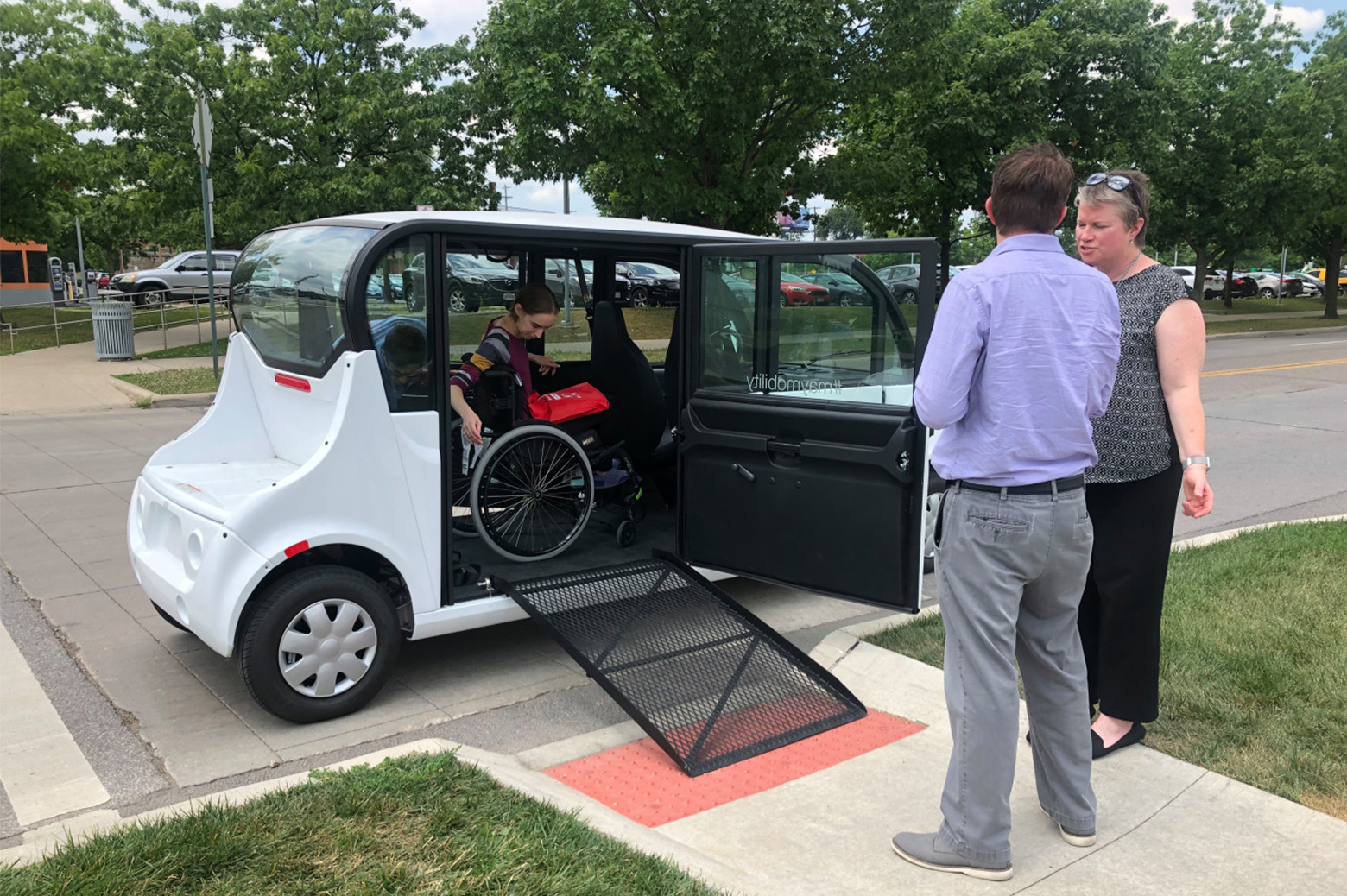Year of growth, experiments for May Mobility
May Mobility intends to gradually acclimate the public to the experience of autonomous driving.

 Enlarge
Enlarge
It’s been a busy year for autonomous vehicle startup May Mobility, co-founded by CSE Prof. Edwin Olson. Its six-seat electric shuttles are deployed in cities across the Midwest, and with a new round of financing it’s undertaken a nationwide expansion. On top of that, the company has facilitated over 100,000 rides in autonomous shuttles across its different routes, now including Grand Rapids, Michigan, Columbus, Ohio, Providence, Rhode Island, and Detroit alongside their headquarters in Ann Arbor.
May Mobility develops an autonomous vehicle stack and works with manufacturers to install it in low-speed, compact fleets with safety drivers and digital displays that show route information. Additionally, it offers a fleet operation service that includes cleaning, oversight, and other recurring maintenance tasks. Their electric-powered fleets are deployed for free use by the public, offering shuttle services to airports and around town.
In the spring of 2019, May Mobility announced that it raised $22 million in a series A round. It comes after an $11.5 million seed round in February, and brings the company’s total raised to $33.6 million. The company immediately set to work with an expansion to Providence in May and Grand Rapids in July.
In Providence May offers a commuter service with autonomous shuttle rides across 12 stops, including the city’s Amtrak station. In Grand Rapids, passengers can catch the 22-stop loop around downtown on both sides of the Grand River. These routes are similar to their existing public transit service in Columbus, where they operate in a 2-mile loop around the Scioto Mile downtown. In Detroit, the company operates a shuttle service for Bedrock, a large private property developer in the city, to move employees from a parking garage to the office complex in the central business district.
The company has also begun to expand their shuttle design offerings, recently announcing tests of a wheelchair-accessible prototype version. The new shuttles concluded an initial round of gathering feedback from the community in Columbus, Ohio, who would actually be using the shuttle. May Mobility’s design includes accommodations for entry and exit, as well as for securing the passenger’s wheelchair once it’s on board during the course of the trip.
Olson says the company’s goal is to gradually roll out an alternative to congested commutes and drives around town.
“Self-driving will save cities from congestion,” Olson wrote in a recent Medium post, “not by being deployed in personally-owned vehicles for the affluent, but by fundamentally enabling high levels of service for riders in public transportation systems.”
To fit into that vision, May Mobility intends to gradually acclimate the public to the experience of autonomous driving.
“We want to deploy today to start educating the public,” says Ben Thompson, May Mobility’s business development lead. “There’s obviously some people very excited to jump into an autonomous vehicle. Probably another third is hesitant; they might jump in, but they’re still a little nervous about it. And there’s probably an additional third that are afraid of it, or afraid of riding their bike or driving their car next to it. What we want to do is allay a lot of those concerns and start educating the public today.”
 MENU
MENU